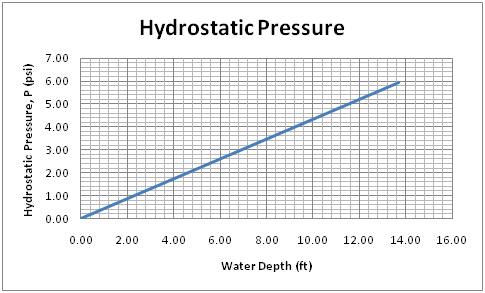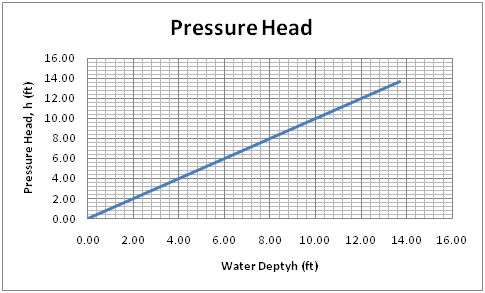

Rainwater Harvesting at the NAU ARD Building
Sizing and Location
Location of the Cistern
The location of the cistern was a challenging task. There were several options available for a location for the cistern. There were three alternatives that were considered for a location. The first Design will be called Design1-Underground in ARD Basement. The second design will be called Design 2-Underground. The third design will be called Design 3-Above Ground. These three alternatives were considered and a decision matrix was used to make the decision. See Table 4.
The first place that was considered was the Applied Research and Development Pod basement which is located within the ARD building. This alternative will be called Design 1. When the building was being constructed, the whole concept of the building was to be a working sustainable system. A rainwater harvesting system was put into place to provide the building with all of its water needs. But due to budgetary reasons, the rainwater harvesting system was cut out of the budget. There was an area put aside in the basement underneath the pod that was set aside for the system. The team was able to go into the basement area that was set aside for the cisterns. Although the basement area was very spacious and gave the team more room than it needed, there were some concerns that were raised. One of the concerns that were raised was the fact that there was a lot of electrical equipment in the basement. If the cistern flooded or broke, this would be a major problem with the electrical equipment. The team was also concerned about the system not being able to be fed by gravity if this type of system was put in place. The basement underneath the pod would not be able to provide enough head for the system.
The team also considered putting in an underground system away from the basement that was originally allocated for the rainwater harvesting system. This design will be called Design 2. The reason the team was considering this type of system was the concern for the freezing temperatures that Flagstaff has during winter time. The team thought that the possibility of the freezing of the water could cause serious damage to the cistern and to the rainwater harvesting system itself. But the team consulted with Josh Robinson. He specializes in rainwater harvesting systems and he assured the team that an above ground system would be fine.
The last idea was to put the cistern above ground right in front of the Applied Research and Development Building. This design will be called Design 3. The cistern would be above ground enough so the system could be a gravity fed system which is preferred by the client as opposed to a pump fed system. This is ultimately the design that the team decided on. See the Appendix for the Decision Matrix that the team used to select the final design of the system. The team conducted five meetings with different people listed below over a period of 4 weeks All of this information we got from several meetings with Karan English, Bryan McLaren and Dr. Patrick Pynes.. Karan English is the director for the Landsward Institute at the ARD building. Bryan McLaren is a graduate assistant for Landsward Institute. Dr. Patrick Pynes is our client and does different types of work at the Applied Research and Development Building.
Decision Matrix
Table 2 Decision Matrix
|
Design |
1-Underground in ARD Basement |
2-Underground |
3-Above Ground |
|
Convenience |
5 |
3 |
7 |
|
Gravity Fed System |
2 |
6 |
9 |
|
Aesthetics |
8 |
8 |
7 |
|
Ease of Implementation |
6 |
4 |
9 |
|
Client Specifications |
8 |
6 |
9 |
|
TOTAL |
29 |
27 |
41 |
The rating scale for the Decision Matrix is based on the numbers 1-10. These numbers correspond to the statements on the top of the Decision Matrix. If the design agrees with the statement completely, then the design will get a 10. If the design completely disagrees with the statement, then the design will get a 1.
Based upon the Decision Matrix presented here, the clear winner in the design that will be implemented in the ARD Building is Design 3. Design 3 was easy to implement and met the needs of the client best.
Sizing of the Cistern
The sizing of the tank was based upon the volume of water that would be needed for use in the garden, and the volume of water that could be collected from rainwater harvesting. The analysis of water use in the garden showed that the amount of water needed for gardening over a period of 12 weeks was 5,400 gallons. This served as a baseline for the amount of water that we needed to collect. By looking at the precipitation and rooftop analysis we were able to calculate the amount of water that we could collect from one drainage downspout. Several different circumstances were looked at for rainwater collection. This included collection of the average amount of precipitation from the months of January to April, the collection of average annual precipitation, and collection of the maximum design precipitation of the rooftop. We feel that it is most important, however, to look at the precipitation from January to April. This is because May and June, when the water is needed, are the driest months of the year. Considering a 30% loss from precipitation from sublimation and evaporation the amount of water that could be collected over this period of time was approximately 9,000 gallons. Because of these and other factors such as location and cost, it was decided that an appropriate volume for the tank would be 6,000 gallons.
Pressure in the tank
The hydrostatic pressure and pressure head in the tank with respect to height is shown in Figure 6 and 7.

Figure 6 Hydrostatic Pressure

Figure 7 Pressure Head